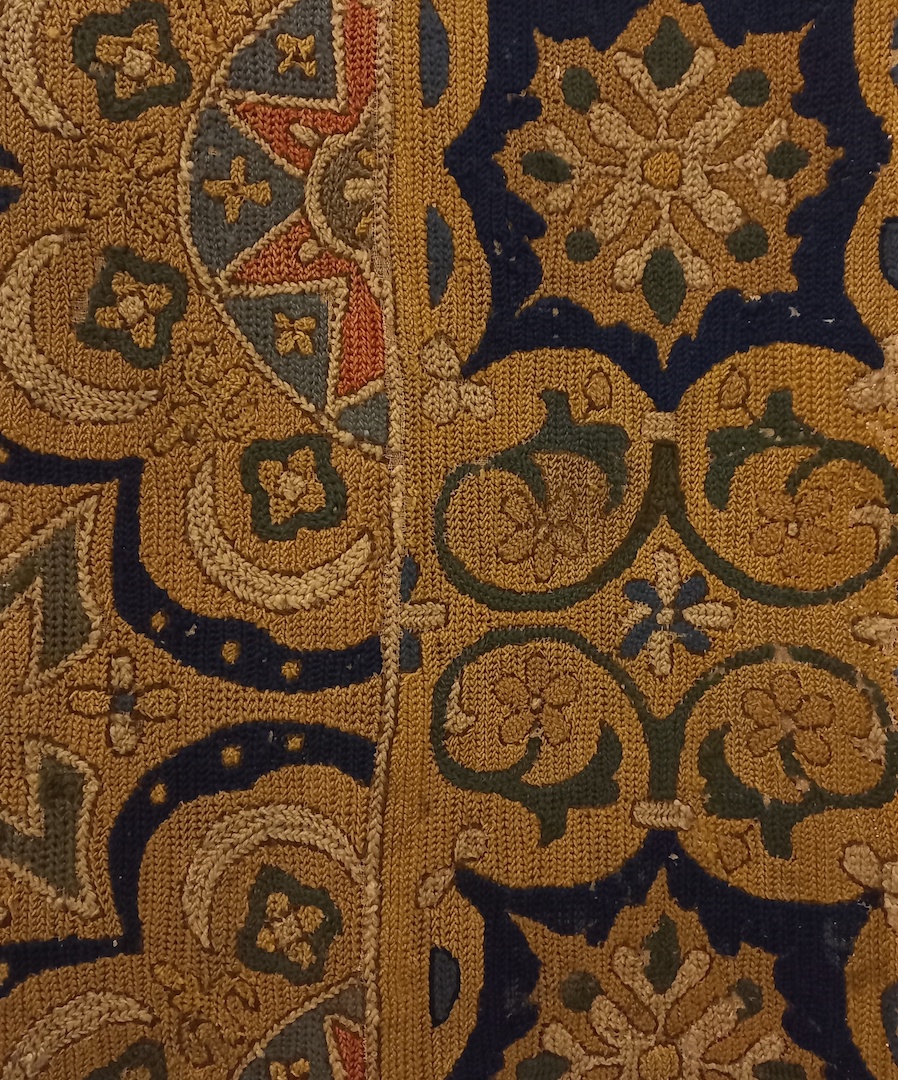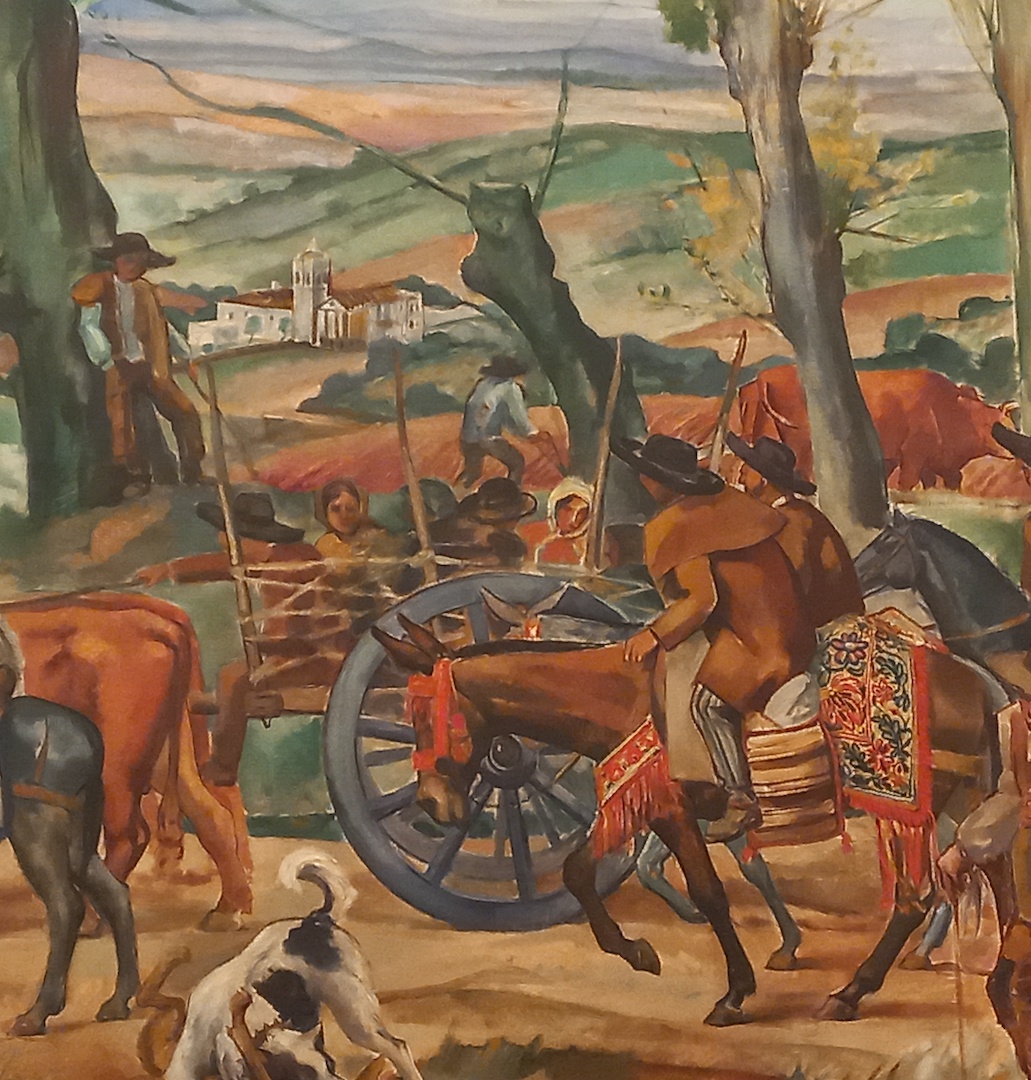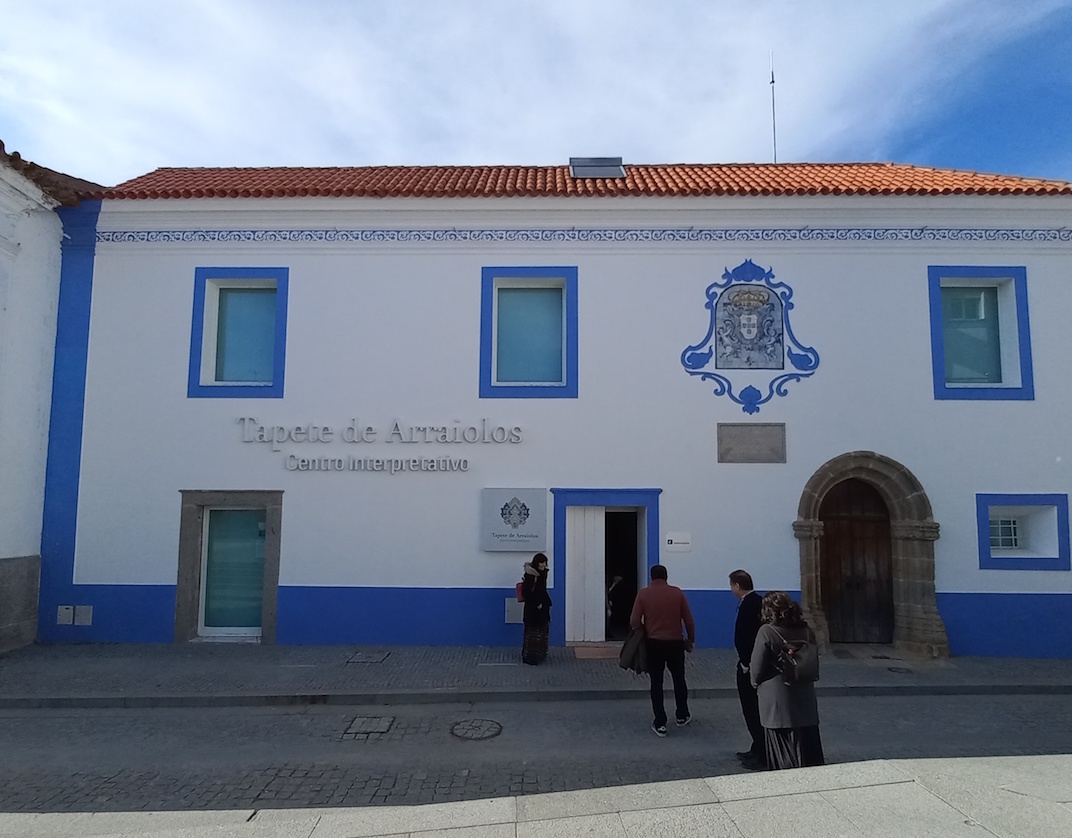 Painting by the Portuguese artist Samão César Dórdio Gomes (1890-1976), showing two women embroidering the famous Arraiolos carpets. Photograph by the author.Various volunteers of the TRC have just been to Lisbon, Portugal (thanks to Erasmus+ funding) for a three-day workshop on the role and position of museums and other cultural institutions in society. My TRC colleagues left on Monday, but I stayed on for an extra day to go to Arraiolos, a small town east of Lisbon famous for its textiles, in particular its hand-embroidered carpets.
Painting by the Portuguese artist Samão César Dórdio Gomes (1890-1976), showing two women embroidering the famous Arraiolos carpets. Photograph by the author.Various volunteers of the TRC have just been to Lisbon, Portugal (thanks to Erasmus+ funding) for a three-day workshop on the role and position of museums and other cultural institutions in society. My TRC colleagues left on Monday, but I stayed on for an extra day to go to Arraiolos, a small town east of Lisbon famous for its textiles, in particular its hand-embroidered carpets.
I wanted to see some members of the delegation from that town that came to see us in Leiden two weeks ago. They included Filipe Rocha da Silva (artist), Prof. Cristina Maria Barrocas Dias (chemist, University of Évora), Rui Miguel Lobo, director of the Centro Interpretativo do Tapete de Arraiolos (CITA), and Silvia Pinto, the town’s mayor.
 Detail of a 17th century Arraiolos embroidered carpet. Photograph by the author. Monday morning Filipe came to pick me up in Lisbon and together we first went to Évora University, between Lisbon and Arraiolos, to talk with Prof. Cristina Barrocas.
Detail of a 17th century Arraiolos embroidered carpet. Photograph by the author. Monday morning Filipe came to pick me up in Lisbon and together we first went to Évora University, between Lisbon and Arraiolos, to talk with Prof. Cristina Barrocas.
I really wanted to see her amazing HERCULES laboratory that cooperates with museums and archaeological institutes on a wide range of analytical processes that can be directly applied to objects, including textiles. They use equipment that ranges from super high resolution microscopes and other equipment to show the detailed layering of objects, and modern instruments for metal and dye analysis.
HERCULES is in the process of expanding and increasing its range of techniques and their applications. As suggested during the Portuguese visit to Leiden, and reiterated during my visit to Évora, HERCULES is going to advise the TRC with respect to our plans to build up a basic, but well-rounded analytical laboratory to investigate fibres, dyes, etc, of objects from the extensive TRC Collection.
The three of us then went on to Arraiolos, a beautiful town with a myriad of small winding roads and white houses with broad blue and beige bands. We first had lunch at a local restaurant and discussed the famous Arraiolos embroidered carpets, their history and their future. It was wonderful to talk about the plans of the Arraiolos mayor and the others to promote the town as a textile centre. Was it a coincidence that we had comparable discussions in Kortrijk, Belgium, only three weeks ago, where the people are also trying to revive and promote the town's textile history. And don't we want to do the same in Leiden?
 Detail of a painting by Samão César Dórdio Gomes (1890-1976), showing horses caparisoned with Arraiolos cloths. Photograph by the author.As for the famous carpets, like many other traditional products all over the world, the production of these embroideries is under severe pressure due to an ageing local population (and an ageing group of women doing the actual embroidery) and competition from embroidered carpets made elsewhere (including China) that are similar to local produce.
Detail of a painting by Samão César Dórdio Gomes (1890-1976), showing horses caparisoned with Arraiolos cloths. Photograph by the author.As for the famous carpets, like many other traditional products all over the world, the production of these embroideries is under severe pressure due to an ageing local population (and an ageing group of women doing the actual embroidery) and competition from embroidered carpets made elsewhere (including China) that are similar to local produce.
After wide-ranging discussions (and very good local food) we visited the main centre for carpet production, the Centro Interpretativo do Tapete de Arraiolos (CITA), to have a look around the building, which, I should add, is open to the public. If you are in the neighbourhood and love embroidery and carpets, it is certainly worth a visit. They have on display a fascinating collection of their famous hand embroidered floor coverings, some of which date back to the seventeenth century. Not surprisingly, given the history of medieval Portugal, the earlier forms still show strong Islamic influences, recalling the Muslim domination of most of the Iberian peninsula between the eighth and fifteenth century.
 Centro Interpretativo do Tapete de Arraiolos (CITA), Arraiolos, Portugal. Photograph by the author.CITA also houses a section for relevant fibres and dyes, and for the techniques of spinning and embroidering (basically stem stitch for the outlines and long-armed cross stitch for filling the motifs and background). It is also possible to try your hand at the embroidery yourself, in the characteristic Arraiolos style.
Centro Interpretativo do Tapete de Arraiolos (CITA), Arraiolos, Portugal. Photograph by the author.CITA also houses a section for relevant fibres and dyes, and for the techniques of spinning and embroidering (basically stem stitch for the outlines and long-armed cross stitch for filling the motifs and background). It is also possible to try your hand at the embroidery yourself, in the characteristic Arraiolos style.
The day ended with a visit to Arraiolos town hall to see a series of large paintings by the Portuguese painter, Samão César Dórdio Gomes (1890-1976), who lived nearby. One of the paintings show Arraiolos carpets being made, while another has two horses bedecked with Arraiolos embroidery.
And then Filipe and I drove back to Lisbon (136 km away), using the time to discuss the day, possibilities for cooperation, how to promote this historic form of hand embroidery and how to help Arraiolos becoming a recognised textile centre. The TRC will be doing its best to assist! I may add that as a first step I already contacted various magazines, including the London-based international journal Selvedge, which immediately agreed to accept an article about Arraiolos and its hand-embroidered carpets for their online and paper editions, in an issue due to be published this summer.
Gillian Vogelsang-Eastwood, 15 February 2023










